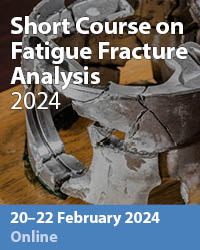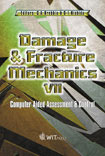Assessment Of Fatigue And Fracture Strength Of Transportation Energy Storage Flywheel Using Finite Element Simulation
Price
Free (open access)
Transaction
Volume
37
Pages
Published
2002
Size
449 kb
Paper DOI
10.2495/DM020231
Copyright
WIT Press
Author(s)
L Wang, X J Ren & G Shatil
Abstract
The safety of an energy storage flywheel for a light rail transportation system was assessed using structural and damage tolerance analyses. The flywheel's strength was estimated using a detailed 3-D finite element (FE) simulation incorporating contact surfaces and sub-modelling techniques. Critical areas were identified near the bolt's holes and, although the simulated strength was considered safe under normal operation (about 3000 RPM), it was conceived that failure due to fracture under extreme conditions such as over-speed may occur. Crack growth at these critical locations near the disk's bolt's holes was considered in an elastic fracture analysis. For three crack positions the maximum stress intensity factor (Kmax) was calculated by conducting separate simulations for different crack lengths. The material fracture resistance was compared to the FE results using an R-curve procedure and the critical crack lengths to cause fracture were obtained. The critical cracks were then used to predict the life of the flywheel in a fatigue crack growth rate analysis. Following the investigation a structural integrity analysis was introduced into the design process for further development. Introduction Flywheels store kinetic energy mechanically by means of rotation of a mass and the use of the inertia. They are an alternative to chemical cell batteries [l, 21. Several applications, including spacecraft and aircraft power systems, already use flywheels [3, 4]. However, a number of design challenges remain before this technology can reach operational status and those considered as safe for service.
Keywords





